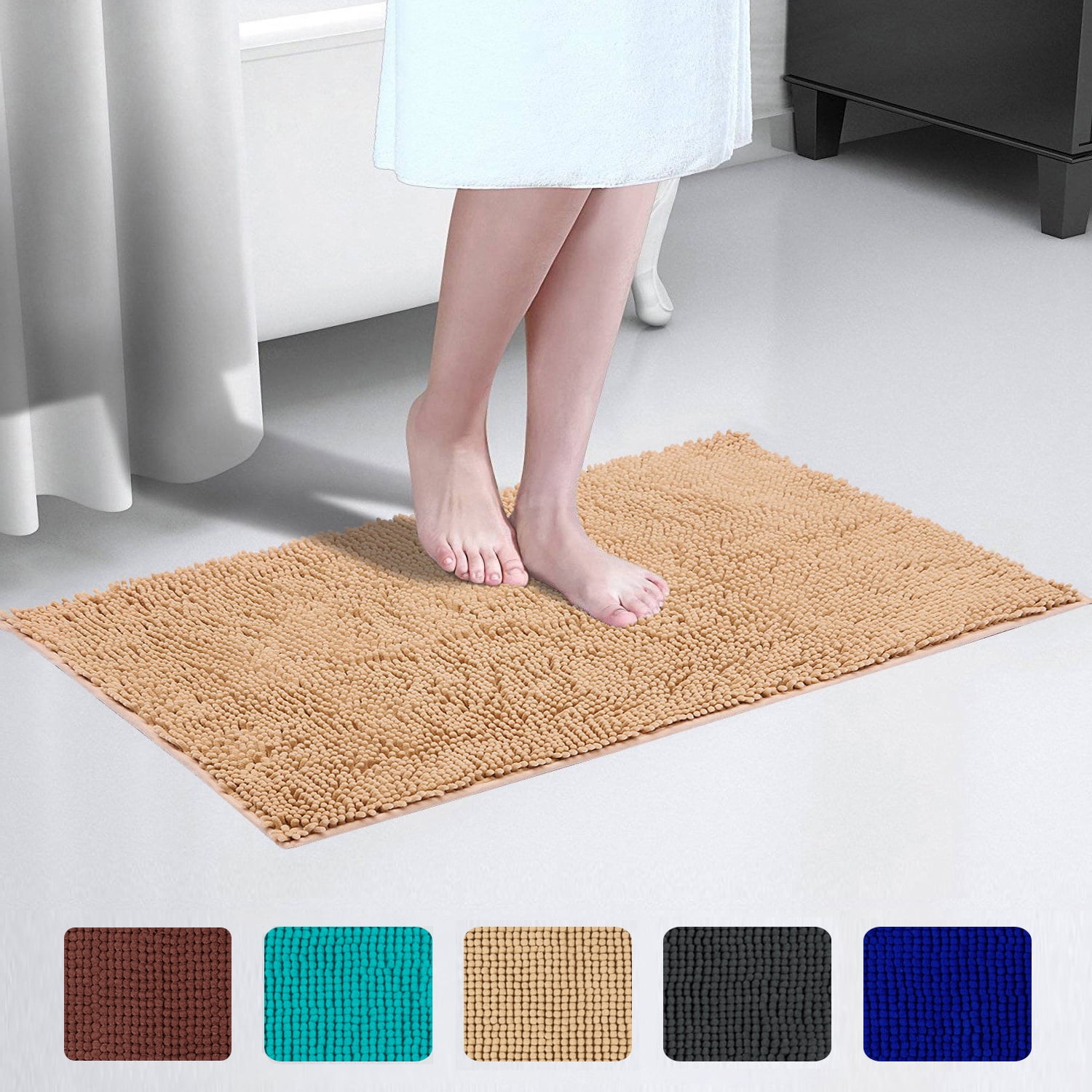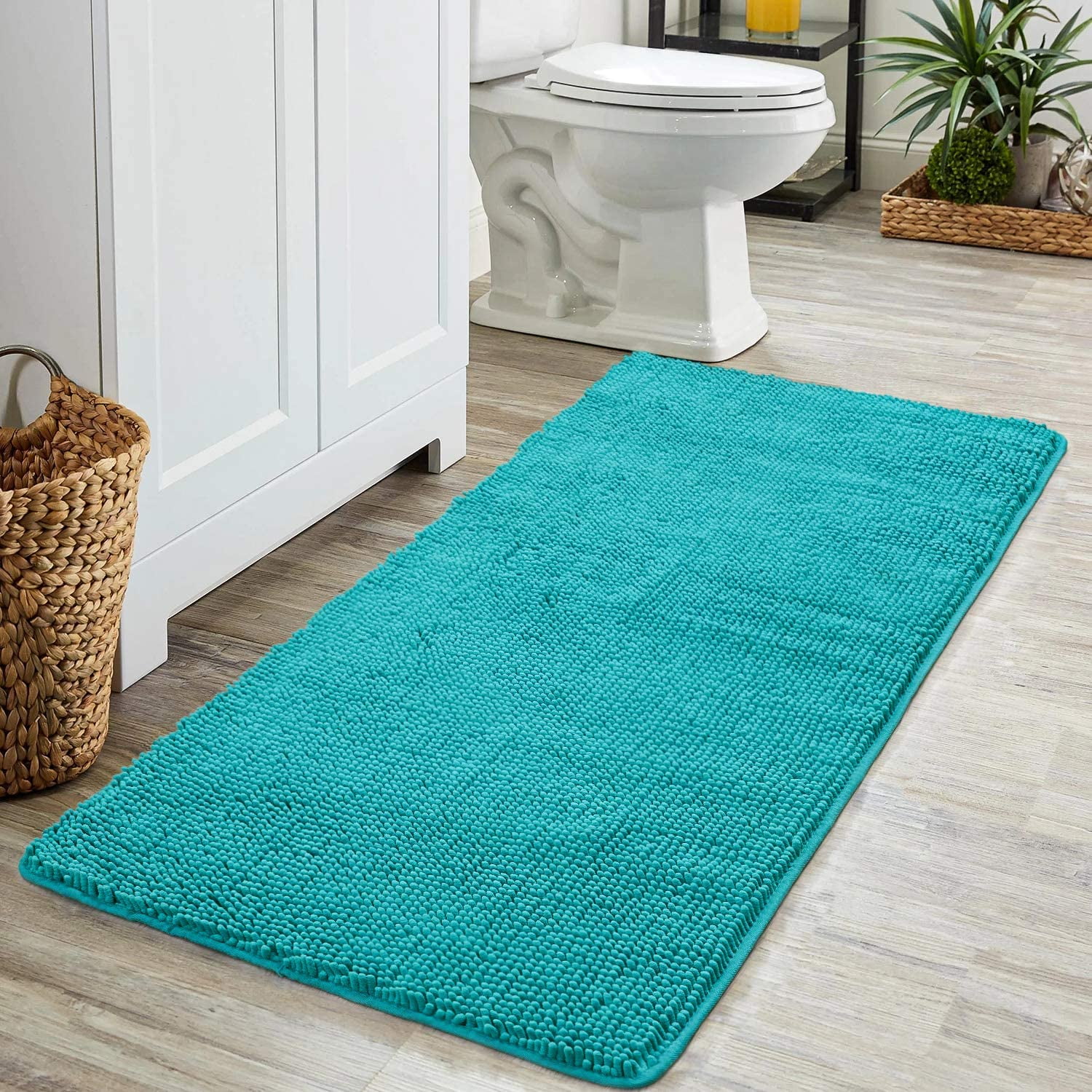Benefits of Latex-Backed Bathroom Rugs

Latex backing is a popular choice for bathroom rugs due to its numerous advantages, making it a highly functional and durable option for high-traffic areas like bathrooms. Latex backing provides a secure grip, enhances durability, and offers excellent water resistance, ensuring a safe and hygienic environment.
Grip and Stability
Latex backing provides exceptional grip, preventing the rug from slipping or sliding on wet bathroom floors. This is particularly important in bathrooms, where water spills and splashes are common, and the risk of slips and falls is high. The textured surface of latex creates friction, ensuring the rug stays firmly in place, reducing the chances of accidents. This stability is essential for safety, especially for young children and elderly individuals.
Durability and Longevity
Latex backing is known for its durability and longevity, making it a long-lasting investment. The robust nature of latex withstands wear and tear, ensuring the rug retains its shape and functionality for an extended period. This durability is particularly important in bathrooms, where rugs are exposed to constant moisture, foot traffic, and cleaning agents. Latex’s resistance to abrasion and tearing makes it a reliable choice for high-use areas.
Water Resistance
Latex backing is highly water-resistant, making it ideal for bathrooms where spills and splashes are common. The material prevents water from seeping through the rug, keeping the floor dry and preventing mold and mildew growth. This water resistance is crucial for maintaining a clean and hygienic bathroom environment, as moisture can lead to unpleasant odors and health hazards.
Comparison with Other Backing Materials
While latex is a popular choice, other materials like rubber and PVC are also used for rug backing.
- Rubber: While rubber offers good grip and water resistance, it can be less durable than latex and may deteriorate faster in harsh bathroom environments.
- PVC: PVC is a cheaper alternative, but it lacks the durability and grip of latex, making it prone to slipping and tearing. Additionally, PVC can release harmful chemicals, making it less environmentally friendly.
Latex emerges as a superior choice for bathroom rugs due to its combination of grip, durability, and water resistance, making it a safe, hygienic, and long-lasting investment.
Choosing the Right Latex-Backed Bathroom Rug
Selecting the perfect latex-backed bathroom rug involves considering various factors to ensure a functional and aesthetically pleasing addition to your bathroom. From size and material to style and functionality, several elements contribute to making the right choice.
Size and Shape
The size and shape of the bathroom rug are crucial for both functionality and aesthetics. Measure the area where you intend to place the rug to ensure a proper fit. Consider the size of your bathroom and the amount of space you want the rug to cover. A small rug may be suitable for a compact bathroom, while a larger rug can enhance the visual appeal of a larger bathroom. Additionally, consider the shape of the rug. Rectangular rugs are a common choice, but you can also find round, oval, or even custom-shaped rugs to complement your bathroom’s design.
Care and Maintenance of Latex-Backed Bathroom Rugs: Bathroom Rugs With Latex Backing

Latex-backed bathroom rugs require specific care to maintain their functionality and longevity. While they offer benefits like durability and slip-resistance, proper cleaning and drying techniques are crucial to prevent damage and ensure a hygienic environment.
Cleaning Methods for Latex-Backed Bathroom Rugs
Latex-backed bathroom rugs are generally easy to clean, but they require a gentle approach to avoid damaging the latex backing. Harsh chemicals can degrade the latex, leading to premature wear and tear.
- Vacuum Regularly: Vacuuming the rug regularly helps remove dirt, dust, and hair, preventing them from accumulating and causing damage to the fibers. Use a vacuum cleaner with a brush attachment to effectively lift dirt and debris from the rug’s surface.
- Spot Cleaning: For spills or stains, use a mild detergent solution and a soft cloth to spot clean the affected area. Avoid soaking the rug, as this can cause the latex backing to deteriorate. Gently blot the stain with the cleaning solution, working from the outside in to prevent spreading.
- Machine Washing: Most latex-backed bathroom rugs can be machine washed on a gentle cycle with cold water. However, always check the manufacturer’s care instructions before washing. Use a mild detergent and avoid using bleach or fabric softener, as these can damage the rug’s fibers and latex backing.
- Air Drying: After washing, allow the rug to air dry completely. Avoid using a dryer, as the heat can damage the latex backing. Hang the rug on a clothesline or lay it flat on a clean surface to dry thoroughly. Ensure the rug is completely dry before using it again, as dampness can lead to mildew and mold growth.
Preventing Mildew and Mold Growth, Bathroom rugs with latex backing
Mildew and mold can thrive in damp environments, making bathroom rugs particularly susceptible. Proper drying techniques are essential to prevent these issues.
- Thorough Drying: Ensure the rug is completely dry after each use, especially after showering or bathing. Moisture trapped in the rug’s fibers can create an ideal environment for mildew and mold growth.
- Air Circulation: Provide adequate air circulation in the bathroom to help the rug dry faster. Open windows or use a fan to promote air movement.
- Regular Cleaning: Regularly clean the rug to remove dirt, dust, and debris that can trap moisture and promote mold growth.
Common Problems and Solutions
- Latex Backing Peeling: This issue can occur due to excessive heat or moisture exposure. To prevent peeling, avoid using a dryer and ensure the rug is completely dry after washing. If peeling occurs, try using a fabric adhesive to reattach the backing to the rug.
- Mold and Mildew Growth: Mold and mildew can develop in damp environments. Proper drying techniques, as described above, are crucial to prevent this issue. If mold or mildew growth occurs, use a mild bleach solution to clean the affected area. Ensure the rug is completely dry before using it again.
- Discoloration: Discoloration can occur due to exposure to sunlight or harsh chemicals. Avoid direct sunlight exposure and use gentle cleaning agents to minimize discoloration.
- Fading: Fading can occur due to excessive exposure to sunlight or harsh chemicals. Avoid direct sunlight exposure and use gentle cleaning agents to prevent fading.
